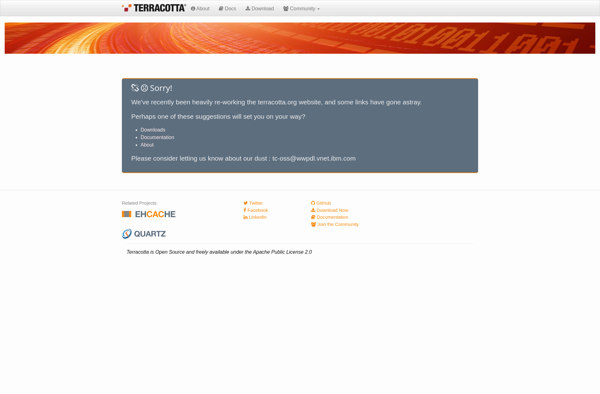H2 Database Engine
H2 is an open-source relational database management system written in Java. It can be embedded in Java applications or run in client-server mode. H2 supports SQL and JDBC APIs and has a small footprint, making it well-suited for testing, prototyping, and small applications.

H2 Database Engine: Open-Source Java Relational DB
H2 Database Engine: An open-source relational database management system written in Java, ideal for testing, prototyping, and small applications.
What is H2 Database Engine?
The H2 Database Engine is an open-source relational database management system written in Java. It can be embedded in Java applications or run in client-server mode, with either TCP or disk-based database files.
Some key features of H2 include:
- Small footprint - The H2 jar file is around 2MB and it has a relatively low memory footprint.
- Support for standard SQL and JDBC APIs - Applications using JDBC can easily switch from other databases like MySQL or PostgreSQL.
- Client-server capabilities - H2 can run in a client-server mode where multiple applications can connect to it.
- In-memory capability - Tables can reside either on disk or in memory depending on need.
- Encryption - Database files can be encrypted using algorithms like AES or SHA-256.
- User authentication - Users can be restricted and granted permissions on different database objects.
- ACID transactions - H2 properly implements transactions, rollbacks, commits etc.
- There are also various options available for backup and recovery, clustering, monitoring etc.
Some common use cases well-suited for H2 include testing, prototyping, small applications and websites. Its lightweight nature, small footprint and in memory capabilities make it very convenient to be embedded into applications.
H2 Database Engine Features
Features
- Embedded and server modes
- Pure Java implementation
- Very small footprint
- SQL and JDBC support
- Disk-based or in-memory databases
- Browser-based Console application
Pricing
- Open Source
Pros
Lightweight and fast
Easy to embed in applications
Good for prototyping and testing
Developer-friendly
Written in Java - works anywhere Java works
Cons
Not designed for large-scale production use
Limited ecosystem compared to larger databases
Not as feature rich as commercial databases
Official Links
Reviews & Ratings
Login to ReviewThe Best H2 Database Engine Alternatives
Top Development and Databases and other similar apps like H2 Database Engine
Here are some alternatives to H2 Database Engine:
Suggest an alternative ❐SQLite
SQLite is an in-process library that implements a self-contained, serverless, zero-configuration, transactional SQL database engine. The code for SQLite is in the public domain and is thus free for use for any purpose, commercial or private.SQLite is the most widely deployed database in the world - it is used in...
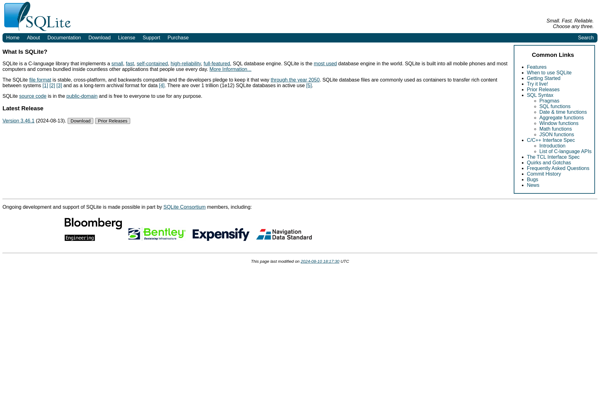
MongoDB
MongoDB is an open-source, document database designed for ease of development and scaling. Some key advantages of MongoDB include:Document Model: MongoDB stores data in flexible, JSON-like documents rather than rows and columns used in traditional RDBMS. This allows for dynamic schemas and easy data manipulation.Scaling: MongoDB is highly scalable and...
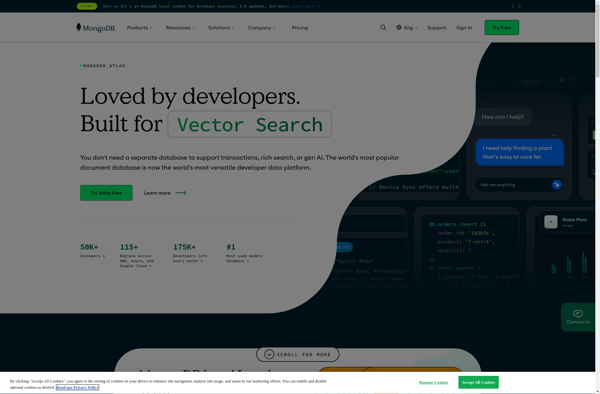
PostgreSQL
PostgreSQL is a powerful, open source object-relational database system with over 30 years of active development. It has earned a strong reputation for its proven architecture, reliability, data integrity, robust feature set, extensibility, and the dedication of the open source community behind the software to consistently deliver performant and innovative...
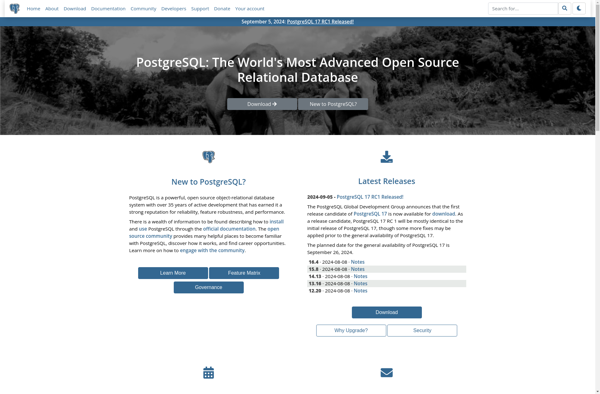
MySQL Community Edition
MySQL Community Edition is a free and open source relational database management system (RDBMS). It uses Structured Query Language (SQL) and is one of the most popular database servers used for web applications. Some key features include:High performance database engine with support for high volume data and concurrent usersCross platform...
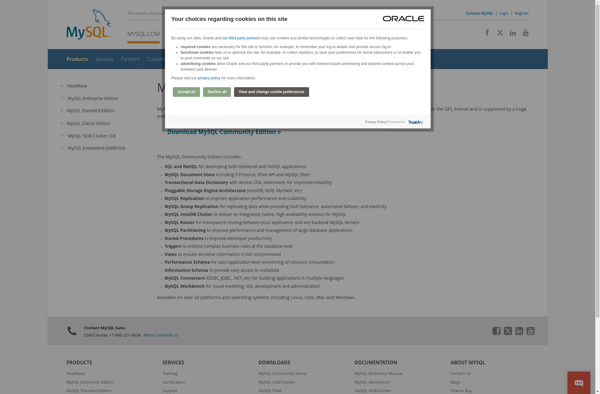
MariaDB
MariaDB is an open source relational database management system, created as a drop-in replacement for MySQL. It is developed by some of the original developers of MySQL and is intended to remain free and open source software under the GNU GPL.After Oracle acquired MySQL in 2010, the founders of MySQL...
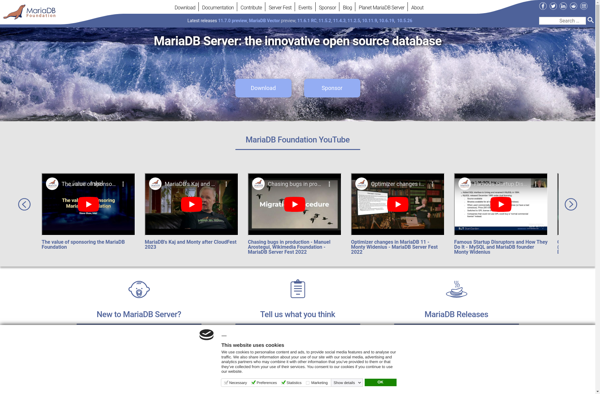
CouchDB
CouchDB is an open-source NoSQL document-oriented database that focuses on ease of use and scalability. It uses a document-based data model that maps neatly to objects in web applications and fits better with object-oriented programming techniques compared to a relational database structure.Some key features and aspects of CouchDB include:JSON documents...
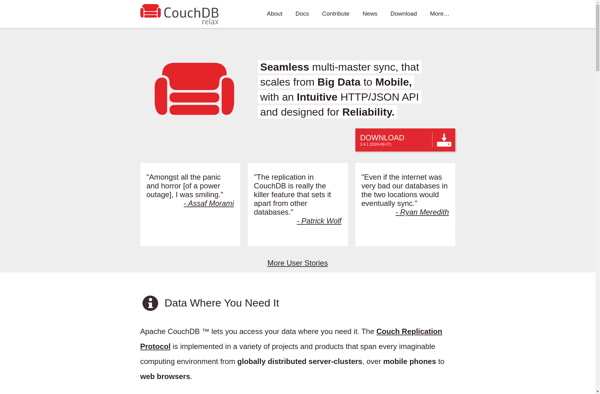
Claris FileMaker
Claris FileMaker is a versatile database application platform that enables businesses and organizations to easily create custom database solutions tailored to their specific needs. Some key things to know about FileMaker:Works across Windows, Mac, iOS, Android, and web browsersFeatures an intuitive drag-and-drop interface for building database layouts and forms quickly...
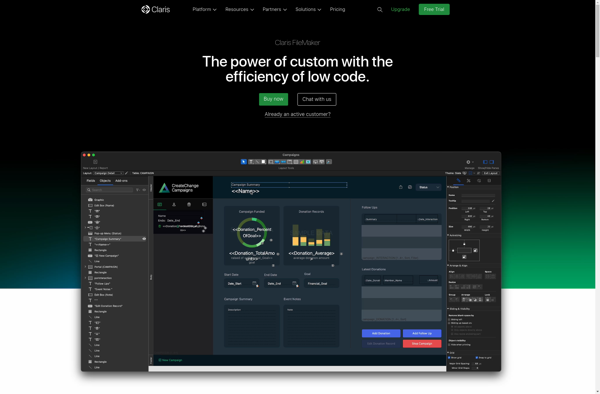
Microsoft SQL Server
Microsoft SQL Server is a relational database management system (RDBMS) developed by Microsoft. It is used for storing, retrieving, managing and analyzing data. SQL Server supports both online transaction processing (OLTP) and data warehousing workloads. Key features include:Support for structured, semi-structured and unstructured dataIn-Memory OLTP for faster transaction processingColumnstore indexes...

LibreOffice - Base
LibreOffice Base is a free and open source database management application included as part of the LibreOffice software suite. It provides tools for creating, accessing, and managing SQL databases without the need for any additional database software.Some of the key features of LibreOffice Base include:Graphical database design tools for creating...
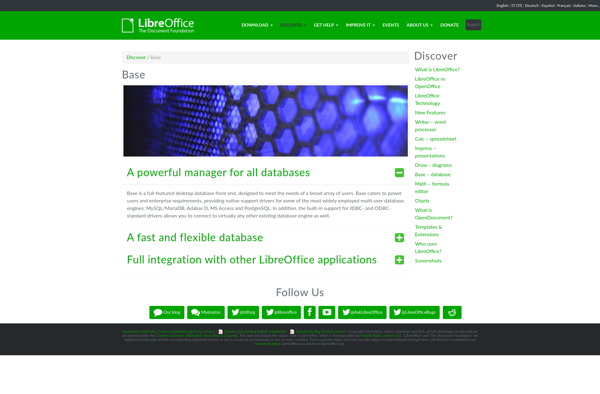
Datomic
Datomic is a distributed database designed from the ground up to enable scalable, flexible and intelligent applications. Some key capabilities and features of Datomic include:Distributed architecture - Datomic can run across multiple servers/devices to scale up and handle large data volumes.Immutable data model - Datomic treats all data as immutable...
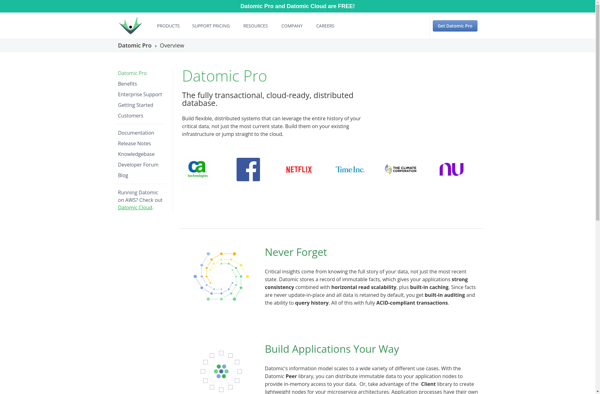
Hazelcast
Hazelcast is an open source in-memory data grid that provides a distributed architecture for scaling data and computation. It allows distribution of data and processing logic across multiple servers, enabling horizontal scalability, high performance, and resilience.Some key capabilities and uses cases of Hazelcast include:Distributed in-memory caching for low latency data...
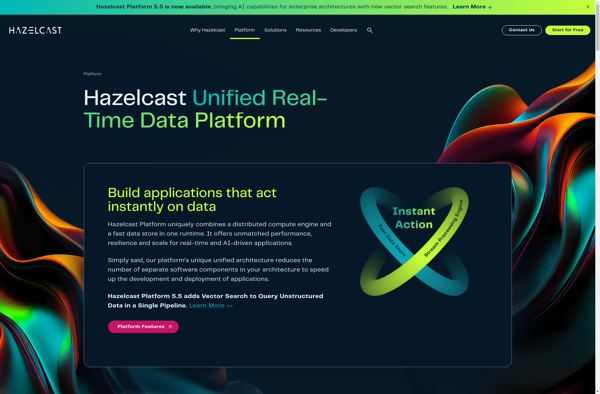
BigMemory
BigMemory is an in-memory data management system developed by Terracotta. It provides a fast, scalable in-memory cache and data store for applications to boost performance.Key features of BigMemory include:Distributed in-memory data storage across multiple serversScales up to terabytes of data in memoryLow latency data access and high throughputPersistence options todisk...
